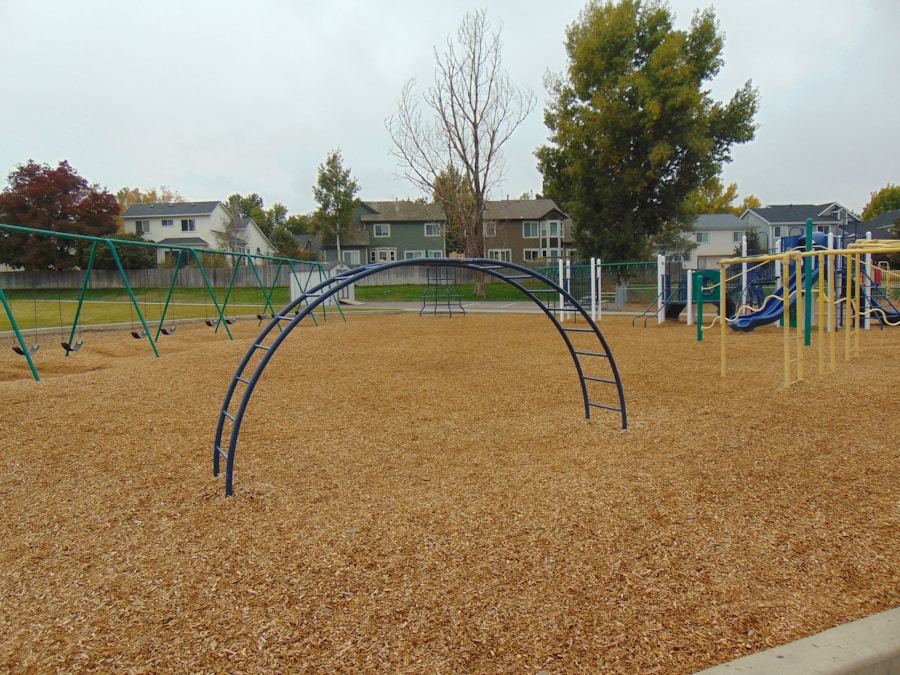Essential amenities are the backbone of any thriving community, serving as the fundamental services and facilities that enhance the quality of life for residents. These amenities encompass a wide range of resources, including parks, educational institutions, healthcare facilities, recreational areas, public transportation, libraries, and cultural centers. Each of these elements plays a crucial role in shaping the social fabric of a community, fostering connections among residents, and promoting overall well-being.
The presence and accessibility of these amenities can significantly influence the attractiveness of a neighborhood, impacting everything from property values to the mental health of its inhabitants. In an increasingly urbanized world, where populations are growing and communities are becoming more diverse, the need for essential amenities has never been more pressing. As cities expand and evolve, the challenge lies in ensuring that all residents have equitable access to these vital resources.
This article delves into the various types of essential amenities and their roles in enhancing community life, illustrating how they contribute to a holistic approach to community development. By examining parks, education, healthcare, recreation, transportation, libraries, and cultural centers, we can better understand how these elements interconnect to create vibrant and resilient communities.
Key Takeaways
- Essential amenities are crucial for the overall development and well-being of a community.
- Parks and green spaces play a vital role in enhancing the quality of life and promoting community interaction.
- Access to quality education is a key factor in driving community development and prosperity.
- Healthcare facilities are essential for building strong and resilient communities.
- Recreational facilities are important for fostering community engagement and promoting a sense of belonging.
The Role of Parks and Green Spaces in Community Enhancement
The Aesthetic and Recreational Value of Parks
Cities like New York have transformed areas such as Central Park into iconic green spaces that attract millions of visitors each year while providing local residents with a place to unwind and connect with nature. Moreover, parks contribute to the physical health of a community by promoting active lifestyles. Access to walking trails, sports fields, and playgrounds encourages residents to engage in physical activities such as jogging, cycling, or playing sports.
The Health Benefits of Parks
Studies have shown that neighborhoods with ample green spaces tend to have lower rates of obesity and related health issues. Parks can foster social cohesion by providing a common ground where people from diverse backgrounds can come together.
Parks as Community Hubs
Community events such as farmers’ markets, outdoor concerts, and festivals held in parks can strengthen bonds among residents and create a sense of belonging.
Access to Quality Education and its Impact on Community Development

Quality education is a cornerstone of community development, shaping not only individual futures but also the collective prosperity of neighborhoods. Access to well-resourced schools and educational programs can significantly influence the socio-economic trajectory of a community. For example, areas with high-performing schools often see increased property values and attract families seeking quality education for their children.
Conversely, communities with underfunded schools may struggle with higher dropout rates and limited opportunities for youth, perpetuating cycles of poverty. Furthermore, educational institutions serve as hubs for community engagement beyond traditional learning. Many schools offer adult education programs, vocational training, and after-school activities that benefit not just students but also their families.
By fostering partnerships with local businesses and organizations, schools can create pathways for internships and job placements that directly impact the local economy. In this way, access to quality education becomes a catalyst for broader community development, empowering individuals while simultaneously uplifting the entire neighborhood.
Importance of Healthcare Facilities in Building Strong Communities
| Metrics | Data |
|---|---|
| Access to Healthcare | Percentage of population within 5 miles of a healthcare facility |
| Health Outcomes | Life expectancy, infant mortality rate, and disease prevalence |
| Economic Impact | Number of jobs created by healthcare facilities, and revenue generated |
| Community Well-being | Percentage of residents with access to mental health services |
| Preventive Care | Percentage of population receiving regular check-ups and vaccinations |
Healthcare facilities are vital components of any community infrastructure, providing essential services that ensure the well-being of residents. Access to quality healthcare is directly linked to improved health outcomes and overall quality of life. Communities with well-equipped hospitals, clinics, and preventive care services tend to experience lower rates of chronic diseases and higher life expectancy.
For instance, cities that prioritize healthcare access often see significant reductions in emergency room visits due to better management of health conditions through regular check-ups and preventive care. Moreover, healthcare facilities play a crucial role in addressing social determinants of health such as income inequality and access to nutritious food. Community health centers often provide not only medical services but also educational programs on nutrition, exercise, and mental health awareness.
By integrating healthcare with community resources, these facilities can help bridge gaps in access to care and promote healthier lifestyles among residents. The presence of robust healthcare systems fosters resilience within communities, enabling them to respond effectively to public health crises and ensuring that all individuals have the opportunity to lead healthy lives.
The Significance of Recreational Facilities in Fostering Community Engagement
Recreational facilities are essential for promoting physical activity and social interaction among community members. These spaces—ranging from sports complexes to swimming pools—provide opportunities for residents to engage in various activities that enhance their physical fitness while also fostering camaraderie. For example, community sports leagues can bring together individuals from different backgrounds, encouraging teamwork and collaboration while building friendships that extend beyond the playing field.
In addition to promoting physical health, recreational facilities serve as venues for community events and gatherings that strengthen social ties. Parks equipped with sports fields or multi-purpose courts can host tournaments or festivals that draw residents together for shared experiences. Such events not only provide entertainment but also create opportunities for local businesses to thrive through sponsorships or vendor participation.
By investing in recreational facilities, communities can cultivate an environment where residents feel connected and engaged, ultimately leading to a more vibrant social landscape.
The Influence of Public Transportation on Community Connectivity
Public transportation is a critical element in enhancing community connectivity and accessibility. Efficient transit systems enable residents to navigate their neighborhoods easily while providing access to essential services such as employment centers, educational institutions, and healthcare facilities. For instance, cities with robust public transportation networks—like San Francisco or London—allow individuals without personal vehicles to commute efficiently, reducing reliance on cars and promoting sustainable living practices.
Moreover, public transportation can play a significant role in fostering economic development within communities. By improving access to jobs and services, transit systems can attract businesses looking for locations with a readily available workforce. Additionally, well-planned public transportation routes can help revitalize underserved areas by connecting them with more affluent neighborhoods or commercial districts.
This connectivity not only enhances economic opportunities but also promotes social equity by ensuring that all residents have access to the resources they need to thrive.
The Role of Libraries and Cultural Centers in Enriching Community Life
Libraries and cultural centers are often underappreciated yet vital components of community life that contribute significantly to personal growth and social cohesion. Libraries serve as gateways to knowledge and information, offering resources that cater to diverse interests—from books and digital media to workshops and educational programs. They provide safe spaces for individuals of all ages to learn, explore new ideas, and engage in lifelong learning pursuits.
For example, many libraries host literacy programs aimed at helping adults improve their reading skills or provide technology training for seniors unfamiliar with digital tools. Cultural centers further enrich community life by celebrating diversity through arts and cultural programming. These centers often host events such as art exhibitions, music performances, dance classes, and cultural festivals that reflect the unique heritage of the community’s residents.
By promoting cultural exchange and understanding among different groups, these centers foster inclusivity and strengthen social bonds within neighborhoods. The presence of libraries and cultural centers not only enhances individual knowledge but also cultivates a sense of pride in community identity.
Creating a Holistic Approach to Community Enhancement through Essential Amenities
The interplay between essential amenities is crucial for creating vibrant communities where residents can thrive both individually and collectively. Parks provide spaces for recreation; educational institutions empower individuals through knowledge; healthcare facilities ensure well-being; recreational areas foster engagement; public transportation enhances connectivity; libraries offer resources for learning; and cultural centers celebrate diversity. Together, these elements form an interconnected web that supports the overall health and vitality of communities.
To achieve meaningful community enhancement, it is imperative that local governments, organizations, and residents collaborate in identifying needs and prioritizing investments in these essential amenities. A holistic approach that considers the unique characteristics of each community will lead to more effective solutions tailored to specific challenges. By recognizing the importance of these amenities in shaping social dynamics and improving quality of life, we can work towards building stronger communities that are resilient in the face of change while nurturing the well-being of all their members.
If you are interested in learning more about luxury condo amenities, you should check out the article on the Luxury Condo Garages website. This article provides valuable information about the various amenities offered in luxury condo buildings, including state-of-the-art fitness centers, rooftop pools, and concierge services. It is a great resource for anyone looking to invest in a high-end condo with top-notch amenities.








Leave a Reply